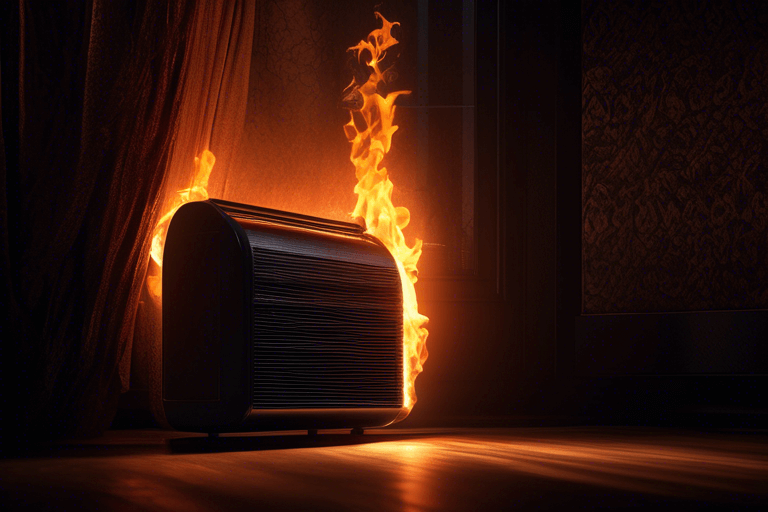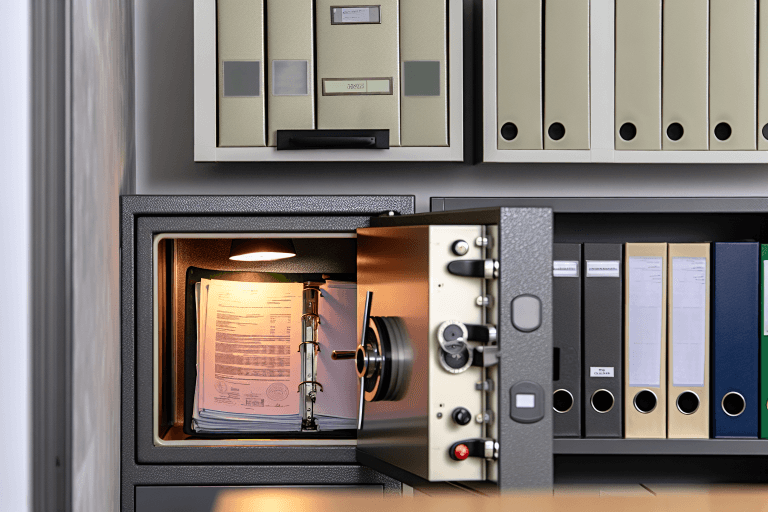
Common Causes of House Fires and Prevention Strategies
House fires can be devastating, causing significant damage to property and posing a serious threat to the safety of residents. Fortunately, many house fires can be prevented by implementing effective safety measures and being proactive in identifying potential fire hazards.
House fires can occur unexpectedly and spread rapidly, endangering lives and causing extensive damage. However, most house fires are preventable through proactive measures and a focus on fire safety.
By understanding the major causes of house fires and implementing effective prevention strategies, homeowners can significantly reduce the risk of a fire in their homes.
In this comprehensive guide, we will explore the major causes of house fires and provide practical tips on how to prevent them. By following these guidelines, homeowners can significantly reduce the risk of a fire and protect their loved ones and belongings.
Electrical Fire Prevention
Electrical fires are a common cause of house fires. Faulty wiring, overloaded circuits, and malfunctioning appliances can all contribute to electrical fires. You can prevent electrical fires by:
Unplugging Unused Electronics
Many electronic devices continue to draw power even when turned off, which can increase the risk of an electrical fire. Unplugging electronics when they are not in use eliminates the potential for electrical surges and reduces the risk of a fire.
Proper Use of Surge Protectors
Surge protectors help prevent electrical fires by diverting excess voltage away from electronic devices. It is important to use surge protectors for all sensitive electronics and to replace them regularly to ensure their effectiveness.
Regular Inspection of Electrical Wiring
Periodically inspecting the electrical wiring in your home can help identify potential fire hazards. Look for signs of frayed wires, loose connections, or overloaded circuits.
If any issues are detected, it is essential to hire a certified electrician to address the problem promptly.
Cooking Safety Measures
Cooking-related fires are a leading cause of house fires. The following safety measures can help prevent cooking fires:
Never Leaving Flames Unattended
Never leave the stove or oven unattended while cooking. Unattended flames can quickly escalate into a dangerous fire. If you need to leave the kitchen, turn off the stove or oven until you return.
Keeping Flammable Items Away from Heat
Flammable items such as kitchen towels, curtains, and paper should be kept away from cooking surfaces. It is crucial to maintain a safe distance between flammable materials and heat sources to prevent accidental fires.
Installing Smoke Alarms and Fire Extinguishers in the Kitchen
Installing smoke alarms and fire extinguishers in the kitchen provides an additional layer of safety. Smoke alarms can quickly detect the presence of smoke and alert occupants, while fire extinguishers can be used to extinguish small fires before they escalate.
Heating Equipment Safety
Heating equipment, such as furnaces and space heaters, can pose a fire hazard if not used properly. You can ensure heating equipment is safe by:
Regular Maintenance of Furnaces and Chimneys
Regular maintenance of furnaces and chimneys is essential to prevent fires. Hire a professional to inspect and clean your furnace and chimney annually to remove any debris or blockages that could lead to a fire.
Safe Use of Space Heaters
When using space heaters, keep them at least three feet away from flammable objects, such as curtains or furniture. Never leave space heaters unattended, and turn them off when leaving the room or going to bed.
Keeping Combustible Materials Away from Heating Sources
Flammable materials, such as blankets and clothing, should be kept a safe distance away from heating sources. Avoid placing these items near space heaters, radiators, or furnaces where they can catch fire by getting too hot.
Smoking Precautions
Smoking indoors poses a significant fire hazard due to the potential for a cigarette to ignite flammable materials. You can minimize the risk of smoking-related fires by:
Smoking Outside and Properly Extinguishing Cigarettes
Encourage smokers to smoke outside the house, away from flammable materials. It is essential to thoroughly extinguish cigarettes in designated ashtrays or with water to prevent accidental fires.
Keeping Ashtrays Away from Flammable Materials
Ashtrays should be placed on non-combustible surfaces and kept away from flammable materials like curtains or furniture. Empty ashtrays regularly to prevent smoldering cigarette butts from causing a fire.
Installing Smoke Alarms in Smoking Areas
Installing smoke alarms in designated smoking areas can provide an early warning in case of a fire. These alarms should be tested regularly to ensure they are functioning correctly.
Prevention of Candle-Related Fires
Candles can add ambiance to a home but can also pose a fire risk if not used safely. Candle-related fires can be prevented by:
Never Leaving Burning Candles Unattended
Never leave burning candles unattended, even for a short period. Always extinguish candles before leaving the room or going to bed.
Placing Candles on Stable and Non-Flammable Surfaces
Ensure that candles are placed on stable surfaces that are resistant to heat and flames. Use candle holders or containers that can catch dripping wax to prevent accidental fires.
Keeping Candles Away from Curtains and Other Flammable Objects
Keep candles away from curtains, furniture, and other flammable materials. Ensure that there is ample space between candles and any potential fire hazards.
Safety in the Laundry Room
The laundry room can be a source of potential fire hazards if not properly maintained. To ensure safety in the laundry room:
Cleaning the Dryer Lint Trap Regularly
Regularly clean the lint trap in your dryer to prevent the accumulation of lint, which is highly flammable. A clogged lint trap can increase the risk of a dryer fire.
Checking the Dryer Vent for Blockages
Inspect the dryer vent and exhaust duct to ensure they are free of lint or other obstructions. A blocked vent can restrict airflow and increase the risk of a fire.
Avoiding Overloading the Dryer
Avoid overloading the dryer, as excessive amounts of clothing can prevent proper airflow and increase the risk of overheating and fire.
Careful Storage of Flammable Materials
Proper storage of flammable materials is crucial to prevent accidental fires. Follow these guidelines to ensure the safe storage of flammable materials:
Storing Flammable Liquids in Approved Containers
Flammable liquids, such as gasoline or paint thinner, should be stored in approved containers specifically designed for their safe storage. These containers should be kept in a well-ventilated area away from ignition sources.
Keeping Flammable Materials Away from Heat Sources
Flammable materials, such as cleaning products or aerosol cans, should be stored away from heat sources, such as stoves or heaters. Store these items in cool, dry places to minimize the risk of ignition.
Properly Disposing of Flammable Waste
Dispose of flammable waste, such as oily rags or used fireworks, in designated containers. Never leave these materials lying around, as they can spontaneously combust and cause a fire.
Importance of Smoke Alarms and Fire Extinguishers
Smoke alarms and fire extinguishers are essential tools for early detection and containment of fires. They play a crucial role in preventing house fires.
Consider the following steps to ensure the effectiveness of smoke alarms and fire extinguishers:
Installing Smoke Alarms in Every Room and Hallway
Install smoke alarms in every room and hallway of your home to provide early detection of smoke or fire. Test the alarms regularly and replace batteries annually to ensure they are functioning correctly.
Testing Smoke Alarms Regularly
Test smoke alarms at least once a month to ensure they are working properly. Replace any faulty alarms immediately to maintain a reliable fire detection system.
Placing Fire Extinguishers in Key Areas
Place fire extinguishers in key areas of your home, such as the kitchen and near potential fire hazards. Ensure that all family members know how to use a fire extinguisher correctly.
Creating an Emergency Escape Plan
Having an emergency escape plan is crucial in the event of a fire. Follow these steps to create an effective escape plan:
Identifying Escape Routes
Identify multiple escape routes from each room in your home. This includes windows, doors, and alternative exits. Practice using these routes with all family members to ensure familiarity.
Conducting Fire Drills with Family Members
Regularly conduct fire drills with all family members to practice the emergency escape plan. This will help everyone become familiar with the process and reduce panic in the event of a real fire.
Designating a Meeting Point Outside the House
Designate a specific meeting point outside the house where all family members can gather after evacuating. This ensures that everyone is accounted for and helps emergency responders determine if anyone is still inside the house.
Protecting Your Valuables in the Event of a Fire
If you do find yourself present in a house fire and are unable to control the blaze before it gets out of hand, the first thing you should do is exit the building and call emergency services.
DON'T waste time trying to collect and carry any valuable items with you.
Be prepared ahead of time by protecting any valuables or sentimental belongings inside a fireproof safe.
Not all safes are fireproof. Choose a safe with an adequate fire rating. The fire rating of a safe indicates how long it can withstand high temperatures before the contents inside are compromised. This is usually measured in minutes or hours and degrees Fahrenheit or Celsius.
Fireproof safes are essential tools for safeguarding important documents, valuables, and irreplaceable items from the destructive power of fire.
Prevention is Key
Remember, prevention is key when it comes to house fires. By following these guidelines and being proactive in implementing fire safety measures, homeowners can significantly reduce the risk of a fire and protect their loved ones and valuable possessions. Stay safe and prioritize fire prevention in your home.







